Teeth Cleaning Habits To Have With Braces

Good oral hygiene is one of the most important goals that we should all have to maintain the health and strength of our teeth and gums. Once we get braces, however, our oral hygiene regimen will change to account for the new appliance in our mouths that we will have to clean around. Whether you have traditional braces or lingual braces, cleaning around the brackets and wires is essential in preventing cavities and tooth decay. There are many options to choose from to clean between teeth, such as a proxabrush, and other tools to thoroughly brush around the brackets, such as an electric toothbrush. Find out what all you can do to keep your smile healthy and bright with braces with these tips!
Extra Care For Teeth During Orthodontic Treatment
Orthodontic care is one of the most helpful and important dental treatments that patients have readily available to them. While there are many versions of braces that help straighten our teeth and fix misaligned bites, there are certain precautions that we need to take to ensure proper care for our orthodontic appliances and teeth. Brackets and wires in the mouth make it easier for food particles to get stuck in, which can lead to dental problems, like cavities. Proper oral hygiene is essential during your time with braces to avoid any preventable issues that can lengthen your treatment time or need special care to be fixed.
Since braces naturally create nooks and crannies where bacteria can hide, it is important to maintain a good oral hygiene regimen everyday so that you can avoid tooth decay and gum problems during orthodontic treatment. If teeth and brackets are not kept clean, permanent damage can occur to the tooth enamel, as well. When this occurs, white spots (tooth decay) can begin appearing on the teeth where the enamel surface has lost minerals, which cannot be reversed. Bleeding or inflamed gums, called gingivitis, is also common whenever patients don’t clean their teeth thoroughly enough with braces, and it can be very painful. While it is not likely that all of these issues will occur if you miss brushing your teeth or flossing well a few times, you will be more prone to an increased risk, which will hurt your oral health and complicate the rest of your orthodontic care.
Teeth Cleaning Options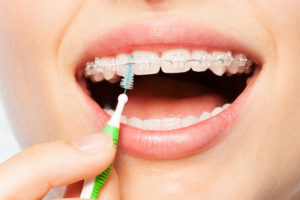
Although cleaning your teeth with braces isn’t too difficult of a process for most patients, there are some tools that you can use to better clean around the hard-to-reach areas in your mouth and make your time cleaning more efficient. First and foremost, make sure that you (or your child) are brushing after each meal. It may seem insignificant, but brushing after you eat removes food particles that are stuck in braces, reduces staining and prevents bacteria buildup. Secondly, use a threadable floss or floss threader to clean underneath the wire of your braces. A floss threader works by inserting the pointed end between the teeth and under the archwire. From there, move it back and forth until it is able to thread the floss between the teeth. Then, you can floss the two teeth, on either side, to remove all food that may be stuck there. If you’re having trouble with your floss getting stuck, consider using waxed floss, which slides between the teeth easier and doesn’t get snagged.
After brushing and flossing, using a proxabrush is helpful in cleaning between each bracket. Commonly referred to as an interproximal brush or “Christmas tree brush,” a proxabrush is placed between two brackets, below the archwire, and uses an up-and-down motion to remove any lodged food particles that brushing and flossing can’t get to. Clean the brackets with the proxabrush on both sides, starting either up from the bottom or down from the top, and repeat between each tooth. Another option for hard-to-reach areas is an oral irrigator, which uses a pulsating stream of water to remove plaque and food debris. Mouthwash is also a helpful tool to kill and bacteria that may have been left after brushing and flossing. For an extra clean, try using an electric toothbrush to maximize cleaning and brush those difficult areas of the mouth that are hard to reach.
Braces-Friendly Diet
The foods we eat and the diet we have affect our oral health and can interfere with orthodontic appliances. Eating sugary or starchy foods can let plaque develop around the brackets, which can lead to cavities, staining or even gum disease. Sticky or chewy foods, such as caramel, taffy, chewing gum and corn on the cob, should also be avoided as they can easily become stuck between brackets and be difficult to remove. Hard foods, such as candy, beef jerky, nuts and popcorn, are also no-nos as they are known to break wires and loosen brackets. If you’re going to eat hard or crunchy foods, such as apples or carrots, make sure to cut them into small, bite-sized pieces to avoid any possible damage.
Regular Orthodontic Checkups
Even if you or your child are following these rules, it is essential that you visit with your orthodontist regularly so that they can monitor teeth movement and adjust any wires or brackets. Your orthodontist or hygienist can show you how to use the tools previously described and give you additional teeth cleaning supplies to aid you during treatment. For more questions about how to clean your teeth with braces or what foods to stay away from, contact Belmar Orthodontics at (303) 225-9016!
Whitening Teeth With Braces
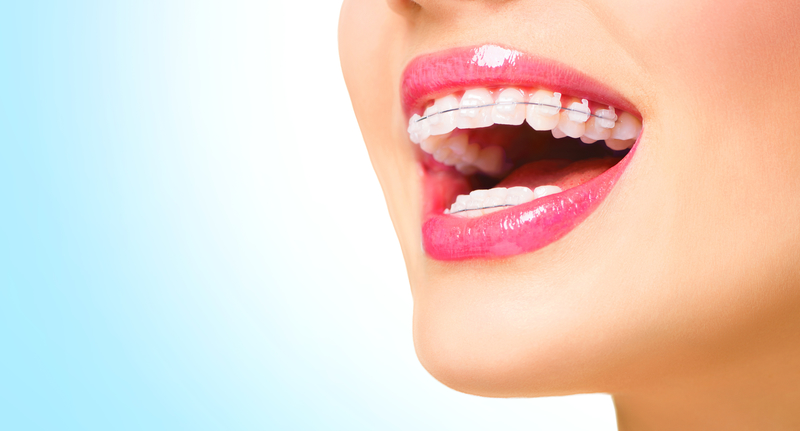
Keeping teeth clean during braces is an important part of your oral health regimen, but keeping teeth white with braces sometimes presents a problem. Teeth whitening with braces is a common practice that orthodontic patients have done to keep their teeth white during orthodontic care. Which teeth whitening treatment you use will depend on what type of braces you have. Achieving a whiter smile is not impossible with braces, but will need extra effort and care to protect your braces. Find out how you can both whiten and straighten your teeth at the same time with these tips and tricks!
In-Office versus At-Home Treatments
Teeth whitening has been a popular choice of treatment for dental patients for years now, but orthodontic patients can now receive the same treatment, too, while getting their teeth straightened at the same time. Keeping your teeth clean while undergoing orthodontic treatment is an important step in maintaining good oral health, and teeth whitening options can enhance that process. With the variety of treatment options that orthodontic patients now have to straighten their teeth, there are plenty of ways to whiten teeth while receiving care. For patients who prefer whitening their teeth at the dental office, one option that patients can choose is “chairside bleaching.” This process requires one or two office visits in which a strong bleaching agent is applied to the teeth combined with a special light to accelerate the whitening effect and lift stains. For patients with brackets on the front of their teeth, chairside bleaching can cause a two-tone effect after traditional braces are removed, so sometimes it is best to bleach after your treatment is over. For patients with lingual braces (on the backside of teeth), though, it is relatively easy to whiten teeth during treatment since teeth whitening focuses on the front of the teeth and not the back. Removable braces and retainers also allow for successful teeth whitening as they allow all of the teeth to be uncovered.
Many patients prefer at-home teeth whitening treatments over in-office treatments because it allows them the flexibility to decide when and where they whiten their teeth. For at-home treatments, gel similar to those used in dental offices will be given to you that is inserted into a customized tray which is fit to your mouth. The gel uses peroxide to bleach the tooth enamel and whiten the tooth. Even those with braces can use these custom trays after braces have been placed in the mouth. The trays have to account for the space that brackets use so the gel doesn’t displace the bracket from the tooth. With at-home treatments, though, there is a larger risk of sensitivity and gum irritation if bleaching material leaks out of the tray. Both options for teeth whitening allow patients the freedom to get the best results during their orthodontic treatment but still get the same benefits that braces offer.
Things To Consider
When deciding on which type of teeth whitening you should do, it is important to remember that the type of braces you have dictates what kind of teeth whitening you can receive. As teeth shift during orthodontic treatment, tooth sensitivity and gum irritation can increase when using mouth trays or teeth whitening strips at home. Traditional braces use brackets on the front side of the teeth to correct malocclusion while other options, like lingual braces, use brackets on the backside of teeth to straighten teeth. Whitening teeth with lingual or removable braces is much easier for patients than those with traditional braces as brackets prevent a good portion of the tooth from bleaching agents. For this reason, most orthodontists recommend using teeth whitening products once braces are removed for most effectiveness. If you do choose to use teeth whitener during treatment with traditional braces and you feel some sensitivity/tenderness, make sure to avoid whitening for a while to give your teeth a break. Chewing gum can also help with any pain you might feel from whitening agents, as well as using sensitivity toothpaste. For additional insights into what to expect when using teeth whitener with braces, meet with your orthodontist to discuss which option is best for your mouth.
Everyday Teeth Whitening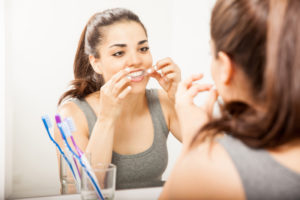
Many patients use everyday teeth whitening products to improve their smile rather than going to a dental office or using expensive products. As teeth whitening has become more popular, more and more products have been created to enhance smiles in the comfort of one’s home with a smaller price tag than traditional methods. For anyone, with or without braces, using a teeth whitening toothpaste is a great and easy way to whiten your smile and maintain good oral health at the same time. Even if you have sensitive teeth, there are still plenty of options for toothpaste that whiten teeth without putting your sensitive mouth at risk. There is also teeth whitening mouthwash that whitens and protects teeth from stains while freshening your breath at the same time. Switching from a manual to electric toothbrush can further whiten your teeth by polishing away surface stains that appear under braces. With all of the different dental items that can be tailored to your individual needs, you can have a whiter smile with braces in no time.
For more information on how you can whiten your teeth during orthodontic treatment, call Belmar Orthodontics at (303) 225-9016! Our team is committed to helping you and your family get the healthiest and brightest smile possible!
The Impact Of Straight Teeth On Oral Health
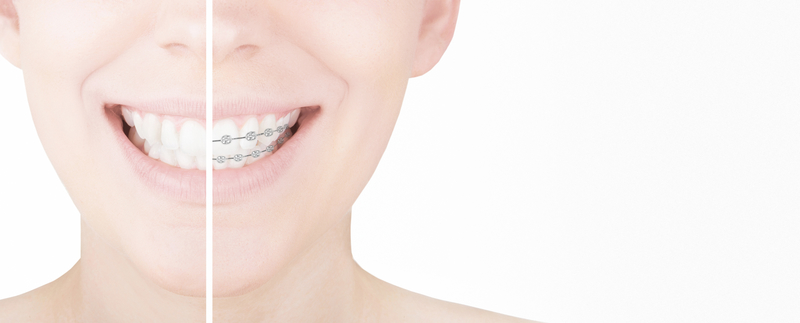
Many orthodontic patients use braces so that they can have straight teeth, but that’s not the only reason why orthodontic care is so important. Having straight teeth can minimize the likelihood of tooth decay and tooth loss while improving your bite, which affects your ability to chew and speak. Correcting crooked teeth can also improve your oral hygiene and strengthen teeth. Learn more about the positive effects that straight teeth can have on your oral health through this guide!
How Straight Teeth Can Help You
One of the main goals of braces is to create a straight smile and correct any orthodontic issues that may prevent teeth from remaining straight. While orthodontics does focus on straightening patients’ teeth, this is not the only purpose of receiving orthodontic care. Whenever a patient has malocclusion, or bad bite, caused by crowded or crooked teeth, daily oral hygiene can become a difficult task. Malocclusion can also stem from teeth that are out of alignment, or jaws that do not meet properly. Thumb sucking or accidents to the teeth can also cause malocclusion. As oral hygiene becomes more difficult to maintain, the likelihood of dental complications, such as tooth decay, periodontal disease, and tooth loss, increases. An improper bite that goes unaddressed can negatively affect chewing and speaking, and wear down tooth enamel. Correcting these problems is of utmost importance to your orthodontist as they seek to give you the best care possible. Orthodontic care that helps straighten teeth can decrease and ultimately eliminate the chances of any of these complications from arising. With straight teeth, patients can better brush and floss their teeth, which will help strengthen them, while easily monitoring any changes that may occur.
What To Expect With Orthodontics
As you begin your orthodontic treatment, there are a few tips that you should know to prepare yourself for what will be expected of you during your time with braces. Although there are some challenges with straightening adult teeth versus children’s teeth due to the pliability of the jawbone, modern technology allows any adult of any age the opportunity to correct crooked teeth with remarkable success. You will first meet with an orthodontist for an evaluation and orthodontics consultation to determine what option is best for your mouth. Any oral health issues, such as gum disease, will have to be resolved before you can begin treatment. Adults have a variety of options to choose from for their orthodontic care, with many discreet options, such as ceramic or clear braces, lingual braces, and Invisalign clear removable retainers, that are available for your needs.
For children, treatment is similar to that of adults and can start as early as the age of 7. Having an orthodontic examination early on can prevent the progression of orthodontic issues that are present and allow the orthodontist to monitor the development/eruption of teeth. Aesthetically-minded treatment options, such as incognito lingual braces, are available for young children who may be self-conscious about their orthodontic care. Most children and adults can expect treatment for 1-3 years, followed by a period of time in which a retainer will be used to keep teeth in their newly aligned positions. Regular dental and orthodontic visits will be necessary to track the progress of teeth and manage any plaque or tartar buildup that could accrue between teeth.
How To Keep Your Straight Teeth Healthy
Once you or your child finishes orthodontic treatment, it is important to continue certain oral health standards to maintain the health of your gums and teeth. Eating a healthy diet, with or without braces, while limiting the amount of sugary foods you consume, will prevent plaque that can stain or damage your teeth. Brushing with fluoride toothpaste and flossing each day will also prevent any plaque buildup, prevent cavities, and keep your teeth clean. Good oral hygiene is especially important for patients wearing braces because you are more susceptible to plaque buildup around brackets and underneath wires. For additional protection, consider using a mouth guard while playing any sports or activities that could damage your mouth, if hit. Creating a good oral health regimen before you start orthodontic treatment will help you have a healthy mouth during and once braces are removed.
For more information on the importance of straight teeth on oral health and what you can do to get the straight teeth that you want, call Belmar Orthodontics at (303) 225-9016! If you’re ready to change your smile for the better, our team is ready to help you reach that goal for you and the rest of your family!
Braces With Oral Health Problems
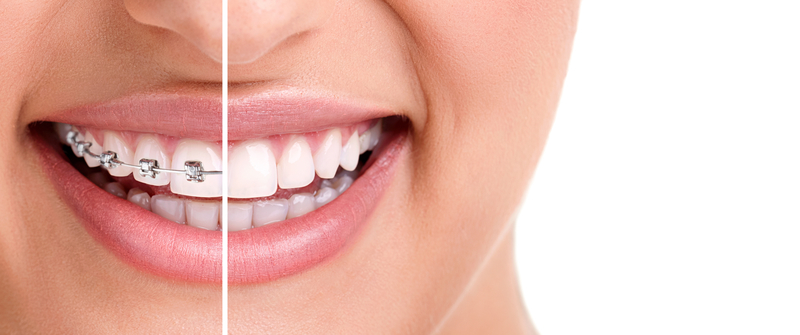
Did you know that your oral health can affect your overall health? Poor oral health can even worsen health conditions you already have such as diabetes or cardiovascular disease. That is because oral health and overall health are highly connected. Your oral issues can become better with braces, but that is only if certain oral health problems are corrected beforehand. Patients can also develop oral health problems if they don’t have the right knowledge with proper braces care. Use these tips to avoid oral health problems with braces and find out how we work around current problems to provide you with a straighter smile!
Oral Health Goals
Did you know that orthodontic treatment can give you a healthier mouth? We know that braces help straighten your teeth, but they can also improve the health of your gums and teeth. When you have crooked and crowded teeth, this makes cleaning your mouth more difficult. This can cause serious oral health problems, such as tooth decay, periodontal disease, and tooth loss. Whether you have straight or crooked teeth, before you let an orthodontist start working on you, there are some important oral health tips to be following before any work begins:
- Eat a healthy diet that limits sugary beverages and snacks
- See a dentist regularly for prevention and treatment of oral disease
- Brush teeth twice a day with fluoride toothpaste
- Floss daily
- Discuss changing certain lifestyle practices, like smoking and using oral piercings
Types of Braces
Braces are a big commitment, and you want to make sure you’re using the correct ones whenever you get them put on. Each of us is a different size and shape, and are mouths aren’t any different. Because of this, there are various types of braces for different sizes and shapes of mouths for children, teenagers, and adults. The four most common types of braces are: traditional, short-term, clear, and Invisalign/ClearCorrect.
Traditional braces are those that we see on a daily basis: a system of wires and brackets that are bonded to our teeth. This type of braces are the most cost-effective, reliable, and are best suited for severe orthodontic issues. Short-term braces are recommended for those patients who wish to align just their front six teeth-the ones that others see the most. These are used for the shortest amount of time (less teeth to align), but there is no adjustment to your occlusion (bite). So if you have a problem with an under/overbite, short-term braces may not be for you. Clear braces are similar to traditional metal brackets except that they use ceramic brackets that match the color of your teeth. These braces have a high aesthetic appeal for those who don’t want to be seen wearing braces, plus they are highly resistant to staining. Invisalign//ClearCorrect straighten your teeth without the traditional wire brackets, and are completely removable, which makes cleaning your teeth a cinch. This type requires more responsibility for the wearer, but if you’re committed to the strict wearing regimen, you can have a straight smile in as little as 12 months!
Taking Care of Your Braces
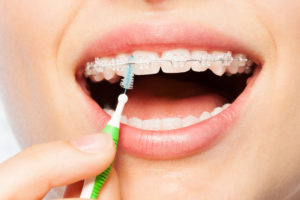
While similar to managing our oral health, maintaining our braces has a few extra steps. To maintain good oral health with braces, it’s important to adopt good oral hygiene throughout the entire process. Brushing after every meal is one of the most important but most overlooked steps in maintaining good oral health. When eating, food particles get stuck in between our teeth and our braces, which can cause staining and bacterial backup between our teeth. Using a regular soft brush in an up-and-down motion on each tooth will do the trick. Secondly, use threadable floss or a floss threader. These tools allow you to get between each tooth and underneath the wires to clean out any food that may be trapped there. Insert the threader between two teeth and move back and forth until the food is released. Lastly, use a proxabrush, or a “Christmas tree brush.” Place the proxabrush between two brackets, below the archwire, and brush up and down. Like the threader, this will also help loosen up any food that may be stuck between your teeth.
A great way to ensure that your braces don’t break and that you don’t get unwanted gunk stuck in them is to watch what foods you’re eating. Foods that are hard, sticky, or high in sugar should be avoided. Eating food that is high in sugar can cause cavities when wearing braces, which can lead to more dental work that you would need to have done. Furthermore, patients with braces should limit between meal snacks and avoid food that could bend the wires, such as caramel, nuts, chewing gum, ice, or popcorn.
When To See An Orthodontist
Now that we understand more about the importance of our oral health, plus the different types of braces, when should we make an appointment with an orthodontist? Many times, we only schedule a time to see an orthodontist whenever our teeth are crooked and we want them straightened. But there are other factors that influence when we should start thinking about getting in to see the doctor:
- Jaws that shift, make sounds, protrude, or are recessed
- Speech difficulty
- Biting the cheek or biting into the roof of the mouth
- Facial imbalance or asymmetry (features out of proportion to the rest of the face)
- Inability to comfortably close lips
- Grinding or clenching of teeth
As mentioned earlier, these are signs that your oral health might not be up to par like it should be. Meeting with your orthodontist and discussing these issues will help them better treat you with one of the four types of braces that we discussed previously. The sooner you get in to see your orthodontist, the sooner any pain or discomfort can be evaluated, treated, and extinguished.
Meet Your New Year’s Resolutions With Our Help!
Belmar Orthodontics can help you on your path towards having a straighter smiles and better oral health. With reputable orthodontists, manageable treatment plans, and services for children and adults, we can help you get the smile that you deserve! Call (303) 225-9016!
What Is an Orthodontist?
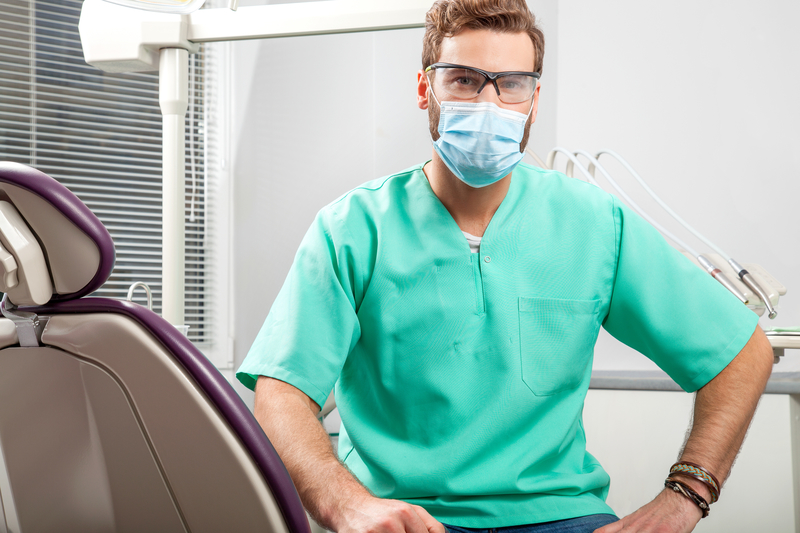
If you want to be an orthodontist, you have at least 10-12 years of schooling ahead of you. Orthodontists are very similar to dentists, but they perform completely different tasks in an office than a dentist would do. This is why you need to see both an orthodontist and a dentist if you have braces. See what services they provide that no one else can!
Want to Become an Orthodontist?
To become an orthodontist, a person has to commit to at least 10-12 years of education, training, fellowships and more. Even after that time, and orthodontist must continue testing and studying throughout the years in order to do orthodontics. An orthodontist is a professional that specializes in correcting crooked smiles, bite and alignment issues, jaw problems and aesthetics of the mouth.
They do this through braces, which commonly consist of metal bracket and wire appliances. Those appliances mold the teeth and jaws into specific alignments and positions. Through focused pressure with these mouth appliances, a person with major bite, alignment, or crooked teeth problems can find themselves with a beautiful, functional smile. This is especially beneficial for patients who have oral health problems that cause them speech impediments and difficulty biting, chewing, speaking and functioning normally.
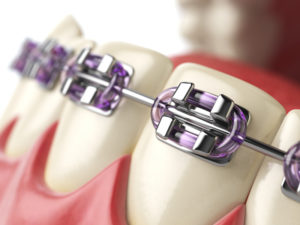
What Does An Orthodontist Do?
An orthodontist is a step above a dentist when it comes to their schooling. To become an orthodontist, a person must complete 4 years of undergraduate schooling at a university. They then apply for dental school and must be accepted. After 4 years of dental school, many students become dentists. However, orthodontists must continue to do at least 2 more years of orthodontic school and fellowships to do orthodontia as a profession.
Even though orthodontists are trained in dentistry, they do different work than dentists. They provide services such as correcting misaligned teeth and smiles, overbite, underbite, crossbite, and other alignment issues. Some are trained to provide surgical orthodontic procedures, or they work closely with an oral surgeon in correcting a misaligned jaw.
For patients who receive surgical orthodontics, an orthodontist will provide pre-surgical orthodontic care to align teeth and jaws as much as possible. A patient will then have oral surgery done to correct issues that can’t be done without surgery. Then, the jaws and teeth are aligned to their final, complete position through orthodontic appliances. If a patient doesn’t receive surgical orthodontics, they generally do 18-24 months of braces to straighten their teeth. Primarily, this is what an orthodontist does: they design braces (based on what type you pick) that fit your smile and that can shape it straight over the course of 1-2 years.
How It’s Different Than Dentistry
Both dentistry and orthodontics focus on oral health and improving a person’s smile. However, dentistry primarily strives to clean the teeth, fix tooth decay, perform root canals and treat gum disease. Patients also receive dental crowns, bridges and implants, and many cosmetic dentistry procedures. If you need teeth whitening or want to improve the look or health of your teeth, seek out a dentist. They can perform teeth whitening services, provide dental veneers and implants, and can help with oral health diseases.
However, if you need your teeth straight in the first place, you need an orthodontist. The American Dental Association recommends that every patient see a dentist at least twice a year to avoid major oral health diseases. You will need an orthodontist at various intervals in your life. However, you don’t see them as frequently throughout life like you would a dentist. When you have crooked teeth or problems with your jaws or alignment, you work with an orthodontist to fix the major issues. Then, a dentist fixes the more minor issues like the color of your teeth.
A dentist is not trained to straighten the teeth even if a dental office provides a transparent aligner service such as Invisalign. You always want to choose a trained orthodontist for properly straightening your teeth so oral issues don’t arise.
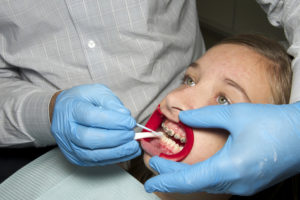
Do You Need Orthodontics?
When battling tooth decay, gum disease, bad breath and more, seek out a dentist. If you want to correct jaw, teeth, alignment, and bite issues, seek out an orthodontist. You may find yourself visiting both often if you receive braces as a child and then later as an adult or teen. Most orthodontists are trained to correct jaw and bite problems in children. You should always take your child in to see an orthodontist by age 7 if you already haven’t. The American Association of Orthodontics recommends this, as major bite and alignment issues of the jaws and teeth can be corrected easily when young. As a person grows older, the jaw hardens and becomes more permanently fixed, and oral health problems are much harder to correct.
If you are deciding to invest in braces, take a look at your teeth. Are they crooked? Do you find that either the upper or lower jaw overlaps the other significantly? Do you have problems speaking, eating, biting or chewing at times? You could benefit from orthodontics! Most people can significantly improve their oral health and their happiness (from having a beautiful smile) if they choose to see an orthodontist for help with their smile.
Dr. Hardy’s Office
Dr. Hardy is an award-winning orthodontist in Lakewood, CO. He is an active member of the American Dental Association and the American Association of Orthodontics. Dr. Hardy works with a team every day to make sure his patients young and old are cared for. At his center, he offers patients the option of getting ceramic, clear braces, traditional metal braces, lingual braces and Invisalign treatment. He can perform surgical orthodontics if needed and pediatric orthodontics. When choosing a center for your family, you want one that can treat patients of all ages and a center whose staff knows how to work really well with children. You can find that at Dr. Hardy’s Belmar Orthodontics office by calling (303) 225-9016!
Teeth Whitening After Braces
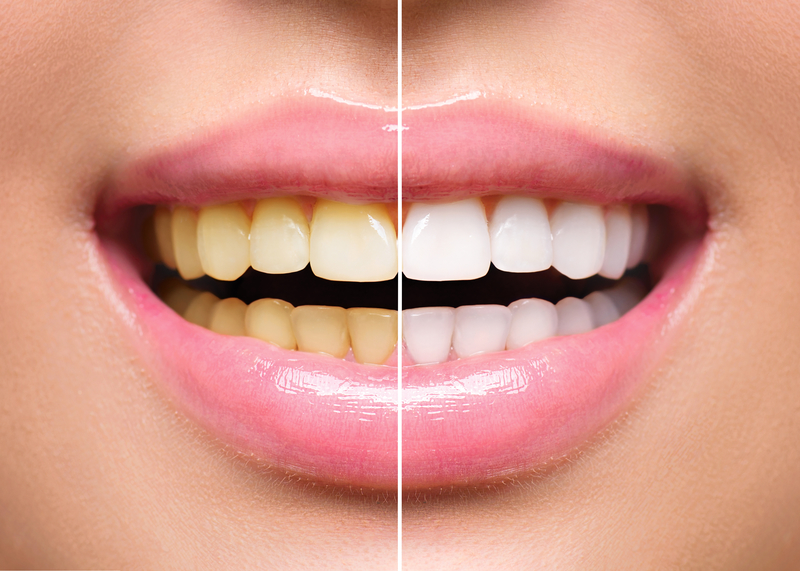
Many patients expect their braces to come off, exposing a beautiful, white smile. However, the teeth are often not bright and sparkling when brackets and wires come off. This is why many patients opt to have teeth whitening treatments after their orthodontic treatment is over. You can even do it right after your braces come off. We can help you to know what you can expect when your braces come off and how to approach teeth whitening to brighten your smile!
Keeping Teeth Healthy During Braces
If you want whiter teeth when your braces come off, it does matter what you do during your time with braces. Your oral health habits and what you eat will make a big difference in the look of your teeth. With braces, teeth are much harder to clean, so with everything you eat, make sure you know what will happen with your teeth. Sugary foods will stick to your teeth more and might sit on your teeth longer, causing decay. Chips, nuts and hard foods can break brackets and wires and even your teeth. Certain drinks will dye your tooth enamel, and can leave uneven shades if you drink them a lot. Consider the following:
- Avoid hard foods that will break orthodontic appliances. These include: nuts, popcorn, corn on the cob, carrots, hard candy, chips, ice, apples and crusty bread.
- Don’t eat sticky foods, which are really hard to get out of brackets. These include: gum, caramel, Sugar Daddies, Skittles, taffies, Tootsie Rolls, gummies, fruit snacks, Starburst, licorice and similar foods.
- Sodas and carbonated drinks. Carbonic acid in these drinks will erode tooth enamel over time.
- Juices and Citrus: Citric acid erodes tooth enamel as well. Juices are generally high in sugar and can contain acids.
It’s also very important to keep your teeth clean. If you have drinks that are purple, blue, red, and other dark colors, these will all stain your teeth. When you do drink these drinks, make sure to brush afterwards (about 20 minutes after) to take away the dye. Keep your teeth clean all day long by continually brushing and flossing so your teeth can stay as white as possible. The more you do for your teeth when you have braces, the less you have to do afterwards.
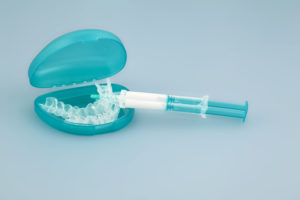
When Your Braces Come Off
Many patients picture beautiful, white teeth when their braces come off. Even though your teeth will be beautiful and straight, they likely won’t be white. They will at least be the same color that they were when you got braces on your teeth. Depending on your oral health habits, your teeth might actually be darker if you had foods with dyes, tooth decay problems or didn’t brush and floss often. If your teeth aren’t white, don’t fret! Most patients do teeth whitening after their braces to get their new straight smile sparkling.
Teeth Whitening After Braces
Teeth whitening is one of the easiest dental services you can get. If you get teeth whitening through a dentist, you will have a dental hygienist whiten your teeth with professional-grade solutions. You will have teeth whitening materials placed on your teeth that will be set with ultraviolet light. Your teeth will then cure for 20-60 minutes until they reach the white shade you desire. This process can be done several times in-office on the same day, or spread out over several days if the teeth are sensitive.
Dentists also provide take-home professional-grade solutions that patients can do on their own time that work much quicker than toothpastes, strips or over-the counter treatments. With any teeth whitening you do, always double check the chemicals being used and what the process will be like. With a professional service, your results are usually guaranteed or the process is redone.
Tips to remember when doing teeth whitening:
- Many at-home products won’t whiten your teeth significantly. Many toothpastes only remove plaque or surface stains, but they don’t actually change the color of your teeth.
- When choosing over-the-counter products, look for ones with hydrogen peroxide or carbamide peroxide. These will actually change the shade of your teeth whiter.
- Your best and quickest results will come from getting professional teeth whitening from a dentist. Teeth whitening can even be done in just one office visit, which is great for upcoming formal events or whitening your teeth when you have very little time.
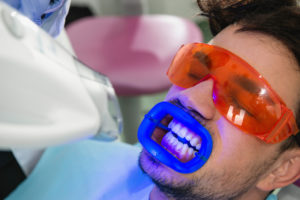
Your Oral Health
Whether your goal is to have whiter teeth or to keep your natural teeth for your entire life, how well you take care of them will determine if you meet your oral health goals. If you never brush and floss your teeth, you can’t expect them to stay healthy. If you drink sodas and juices with dyes everyday, you can expect your teeth to stain. Having healthy teeth (and even white teeth) is fairly easy if you follow certain oral health guidelines:
- Brush your teeth at least twice a day, for at least 2 minutes every time, as recommended by the American Dental Association. If you wear braces, you should brush your teeth after every meal.
- Floss every day, 1-2 times. Flossing gets 40% of your tooth surfaces that get missed when people skip.
- Use fluoridated toothpaste. Fluoride strengthens your teeth, and you can get fluoridated teeth whitening toothpastes.
- See your dentist! You need more than just an orthodontist, even though the orthodontist is very important. Seeing a professional who knows both orthodontics and dentistry is even better (like us). Every person should see their dentist for comprehensive exams and dental cleanings at least twice a year.
- See your orthodontist. When wearing braces, make sure you go to every orthodontic appointment. This helps your orthodontist know if dental problems like decay, erosion or staining are happening.
Following these guidelines can help you keep your natural teeth healthy and strong for life, even with your braces on. For more help taking care of your teeth or questions about teeth whitening after braces, call Belmar Orthodontics at (303) 225-9016!
Get Your Braces in Time for Back-to-School

School is just around the corner and it’s time to prepare your peers for your beautiful smile. Braces not only help straighten your teeth, but they can also improve your speech, your appearance and–most importantly–your confidence! New technology gives you more options for adding a little fashion flare to your smile or straightening your teeth discreetly. Learn about all of your amazing options for braces today.
Back-To-School Success
Summer is almost over and it’s back to school time. Is your smile ready? A lot can happen over the summer and each year brings new exciting changes. Getting a straighter, more beautiful smile is something you don’t want to be without as a new year starts off. Did you know that kids with straighter teeth tend to feel more confident in school and around their peers? That confidence can help them get better grades, make more friends, and be more willing to try new opportunities. Every child and teenager alike wants to shine in their own way. You can do that and receive more confidence by getting your braces just in time for school.
In the past, many adolescents saw braces as embarrassing or unattractive. However, studies show that children and teens are receiving braces in much larger numbers than they did in the past. Now, instead of being embarrassing, braces are seen as a luxury for many families and individuals. In times of recession, families even go without necessities to make sure their children receive braces. Braces truly are worth having because of how beneficial they are for boosting self-esteem, confidence and how you’re perceived socially. Investing in them is a great way to help a child as they start off school once more.
Options for Your Braces
We love providing options for our patients at Belmar Orthodontics! Our most popular option for braces for children and teens alike are our traditional metal braces. However, there are other options we provide as well:
- Traditional Metal Braces – This is our most economical option. Our patients love the colorful bands that they can customize their braces with. Each patient can choose a certain color they love every appointment or even do a rainbow of color if they so choose.
- Incognito Lingual Braces – This option is very similar to traditional metal braces, however the braces are worn on the tongue-side of your teeth. We make an impression of your teeth and then custom-make braces that fit the inside of your teeth perfectly. You can straighten your teeth with the perfect hidden apparatus.
- Clear Ceramic Braces – We can provide ceramic braces for our patients. These braces are similar to traditional metal braces, but they are made from ceramic material. The braces blend in with your teeth perfectly as the brackets and even the wires can be made white. Ceramic braces can also decrease demineralization that can happen with metal sometimes.
- Invisalign Teen – This is a version of Invisalign transparent aligners designed with the needs of teenagers in mind. These custom-fit aligners can correct smiles and unevenly-spaced teeth while allowing patients to continue eating, drinking, and cleaning their teeth with ease.
Cleaning At Home
Your braces are something new and exciting. However, they must have proper care to truly work wonders. Brush and floss your teeth often. We recommend brushing and flossing at least twice daily. However, with braces you may want to brush the teeth more than twice a day. After each meal would be best, as food can become trapped in the brackets very easily, where it will then sit on the teeth. Plaque is a sticky, acidic substance that you want to avoid. Plaque is made from the sugars in the food you eat that mix with the bacteria in your mouth. When food is left on the teeth, that plaque can form and begin to erode your teeth.
Not brushing and flossing enough can cause erosion and demineralization that will be obvious once the braces come off. Use special flossers to get in between the teeth sufficiently. Take care of your teeth so that your smile is beautiful and straight without blemishes when your braces come off!
Tips for Success At School
Your braces are easier to manage when you’re prepared. At school, take a mouthguard with you to gym class. You can get injured with braces when playing sports, especially contact sports. A mouthguard will help protect you and your mouth from injury. Be careful what you eat as well. Some foods can damage or break your braces and other foods can get tremendously stuck in the brackets. Some foods to avoid are anything hard, gooey, crunchy or sticky. This includes food items such as gummy bears, fruit snacks, hard candies, chips of any kind, hard vegetables, and nuts. If you really want a food (such as hard fruits and veggies), make sure to cut them up into bite-size pieces. Biting into foods can lodge them into the braces, so be careful with this.
We also have braces kits you can have or tips to make one yourself. Take a kit with you to school that has the cleaning essentials you need: mirror, toothbrush, toothpaste, floss and flossers, wax for pokey wires, etc. If you need a quick cleaning or a quick fix for a wire, you’ll be set!
Your Free Consultation
There never was a better time to straighten your smile! Braces can provide your child the boost of confidence they need to start of the school year right. If you want to schedule your child’s appointment, call our Belmar Orthodontics office today at (303) 225-9016!
Why Having Good Oral Hygiene Is Important
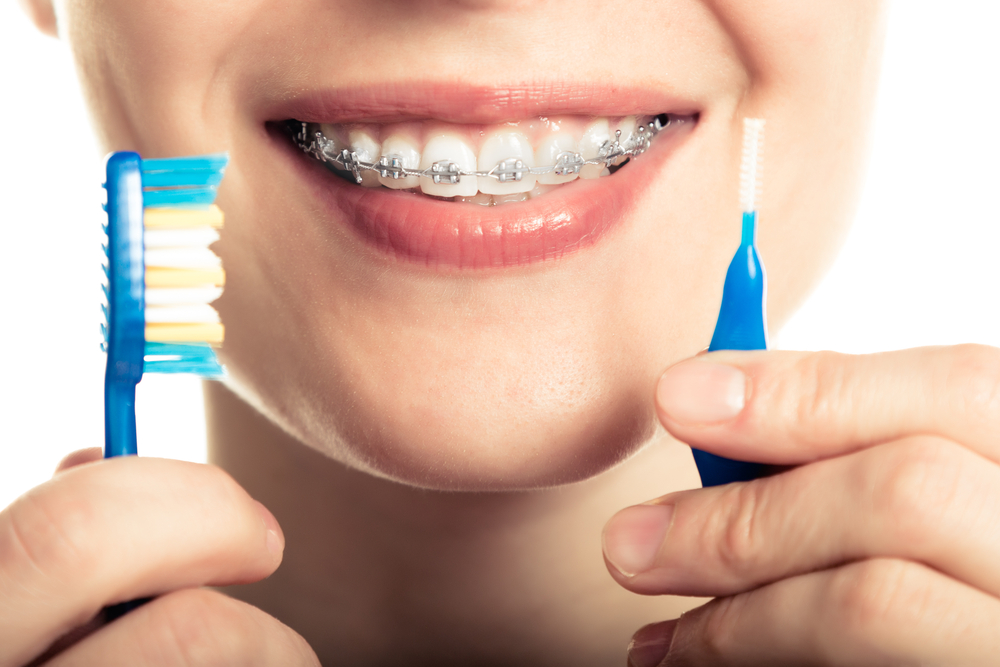
Millions of Americans don’t practice good oral hygiene, which is the #1 reason teeth decay and fall out. Good oral hygiene coupled with good nutrition can help prevent gum disease, tooth decay and even bad breath. It will also help us to be able to straighten your teeth without damage and provide you with a more brilliant, beautiful smile. There are many tips for keeping your teeth healthy and strong. Many of these tips have to do with nutrition and overall good oral hygiene. Good nutrition can aid in better health for you and for your teeth. We want all of our patients to be able to achieve a healthy mouth, but the first steps begin before you even come to our office. At Belmar Orthodontics, learn more about good oral hygiene and how orthodontic care can help you!
Practice Good Oral Hygiene
Sometimes, the basics are the hardest to do because they seem so simple. You skip brushing one night, then you do it again, and soon it starts to become a habit. When it comes to braces, we see patients skip on the basics here and there all the time. Why? This is most likely because braces take a little bit longer to care for than teeth without braces. Skipping on proper brushing and flossing can seriously damage and erode the tooth enamel.
The Prevalence of Decay
We recommend brushing and flossing at least twice a day, if not more. After every meal would be ideal, but not everyone makes a habit of doing that. What happens when you don’t brush and floss the teeth properly? You develop dental caries. The American Dental Association reports that 91% of adults 20 years old and older have had dental caries. 27% had untreated tooth decay. What does this mean? It means that 91% of people have had cavities and 27% had untreated cavities that will continue decaying. The National Institute of Dental and Craniofacial Research reports that dental caries is the most prevalent chronic disease in the United States in both children and adults. The sad part? It’s completely preventable.
Tooth decay occurs when proper oral hygiene practices are not followed. When we eat and drink, bacteria in the mouth mixes with sugar to make acidic plaque. That plaque coats your teeth and over time, erodes the hard tooth enamel. Inside the tooth is a soft, pulpy center that contains nerves and sensitive parts of the tooth. When hygiene practices are skipped, that plaque will erode the teeth enough to break down the enamel and seep into the soft, pulpy center. It will then have a heyday and cause as much decay as it possibly can. Mild tooth decay will result in fillings for cavities. Severe tooth decay will result in a root canal or a dental extraction. The great part about all of this? Tooth decay is completely preventable! All you have to do is take care of your oral health!
Be Extra Careful with Braces
Braces make cleaning the teeth slightly more tricky, but definitely not impossible! With braces, you generally have brackets that are glued to each tooth. A wire connects those brackets on the upper and lower jaws. Brackets and wires in your mouth make it easier for food particles to get stuck. This leads to other dental issues if proper care is not taken. Here are some tips to help prevent tooth decay:
- Brush after every meal. Brushing will help prevent staining and will reduce the potential for bacteria buildup. Food can easily become trapped in the brackets and can erode the tooth enamel around the brackets. Make sure to use a soft brush to brush down from the top, then up from the bottom on each bracket and tooth.
- Use a floss threader. You can’t skip flossing when it comes to braces as it’s even more important now than ever. Tooth decay often happens between the teeth with braces. Using a floss threader will allow you to insert the floss through the teeth and above or below the wire. This allows you to clean effectively in between each tooth. Do this several times a day!
- Avoid certain foods. Hard foods are a no-no with braces and can break brackets or become stuck in the teeth. Avoid hard candy, chips, ice, apples, crusty bread, nuts, popcorn, corn on the cob, carrots and any other hard candies. Avoid chewy candies or foods such as caramel, toffee, taffy, starbursts, licorice, tootsie rolls, gummy bears and more. For a more comprehensive list of food items, you can always call our office.
Over 64 million Americans suffer from gum disease, tooth loss and tooth decay. Poor dental hygiene and tooth decay make orthodontic care that much harder to perform. The point is to get your smile straight and beautiful without making it weaker. Our orthodontic techniques are effective and strong when it comes to getting your teeth in proper position. We want all our patients to have beautiful, straight and strong smiles. It’s vital that you follow proper oral hygiene practices every single day and that you double your efforts while wearing braces. If you need help with your oral hygiene routine or braces maintenance, call our Belmar Orthodontics office today at (303) 225-9016.
Tips for Wearing Braces
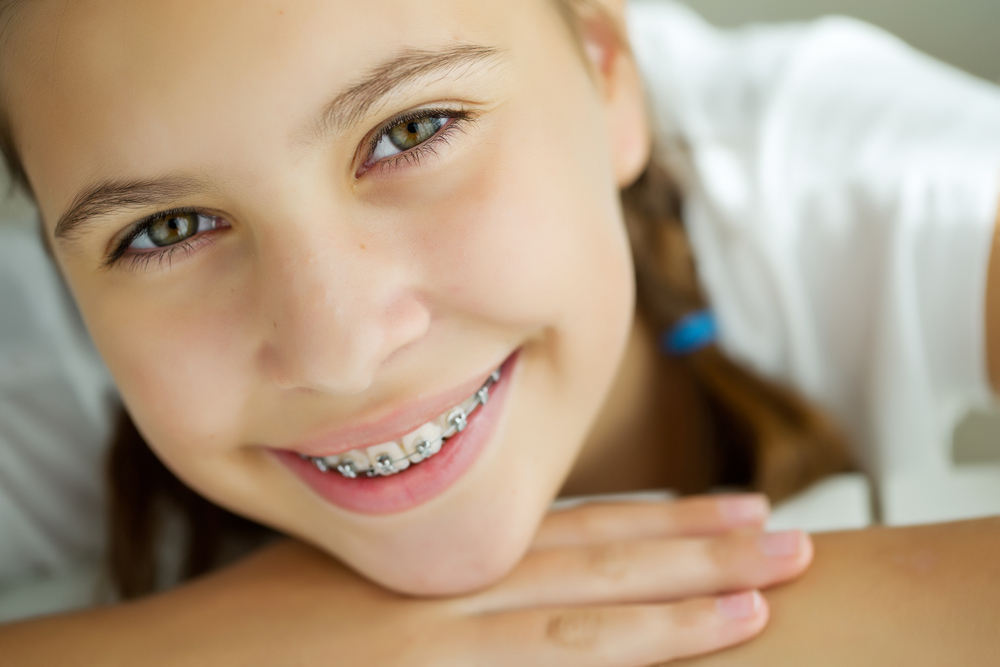
The following tips for wearing braces during your Belmar orthodontic treatment can assist you in getting more out of your experience. Your treatment is helping you gain a smile you are proud of and we want you to be eager to share it all along the way! Being well-informed on what you can do to prevent struggles can help you enjoy the process more and help you stay on track for treatment completion.
Tips for Wearing Braces: Keeping Your Braces Clean
Keeping your braces clean protects your teeth from plaque build-up and enamel deterioration. Learning these tips for wearing braces and how to care for your braces is paramount for success during treatment. The following tips can help you with your daily oral hygiene with braces.
- Brush your teeth at least 2 times a day, if not more. The ideal would be to brush after every meal or snack to avoid food chunks getting stuck in your teeth or brackets. Food can break down on your teeth the longer it is stuck and build up plaque, which could then leave you with tooth deterioration or stains. Keep your brackets clean. Electronic toothbrushes can help you with brushing if you want some extra power to your cleaning, but regular toothbrushes can work as well. The best thing you could do for your braces is to keep them clean.
- Floss every tooth every day. You will have to thread your floss through your teeth to floss them. It takes more time, but you need to do it! Flossing every day (preferably twice a day) will help prevent cavities and will help your teeth to move better and quicker, which is what you want. Electronic water flossers are also helpful for cleaning braces.
- Use mouthwash every day. This will help prevent plaque and gingivitis and other bacteria from sticking around in your mouth. A cleaner mouth with help keep your brackets cleaner as well as your teeth and gums as they move.
- Disclosing tablets can be used to help you visually see where plaque is accumulating. Ask your orthodontist if he thinks using disclosing tablets would help you.
- Don’t chew on non-food items such as your nails and pencils. These count as hard items. Basically avoid anything hard so you don’t break your brackets.
- Use wax to cover up pokey areas in the mouth after you have cleaned your teeth. Your orthodontist can provide you with this wax.
Tips for Wearing Braces: Foods to Skip
- Ice: Don’t chew on ice, as ice can break your brackets! You can suck on ice all you want, but no chewing.
- Caramel, taffy, and gummy bears: This candy is too sticky and gooey and it can take your brackets or wires right off. Avoid all candy that has this consistency.
- Hard chips: Avoid hard chips and taco shells–they will break your brackets.
- Hard pretzels: These also break brackets
- Raw veggies and fruits, such as hard carrots and apples: These can break off brackets and get stuck in your teeth very easily.
- Hard candies: The tendency for most is to chew on the hard candies. Just avoid them altogether.
- Nuts, seeds, popcorn: These foods are hard and can break brackets and wires, just like most things on this list. Be very careful if you do eat them, but it’s safer to avoid them altogether.
- Corn on the cob: The very first bite will lodge a bunch of corn into your brackets. It’s best to cut the corn off first and then enjoy. Cut most fruits, vegetables, and meats into bite-size pieces to avoid food getting stuck in your braces. You will be thankful you did!
- Beef jerky: This seems to be a bracket breaker as well, so beware! Stick to softer meats during your time with braces, and if you must eat beef jerky, cut it into bite-site pieces.
- Soda: Usually soda is full of sugar and damages the health and look of your teeth. It can stain your teeth over time and deteriorate your teeth as bacteria is attracted to sugar and plaque buildup. If you do drink soda, make sure to brush your teeth right after.
- Sugary treats: Sugary snacks all the time will not do you any favors with braces. Just like soda, bacteria loves sugar and too much too often will deteriorate your teeth. Make sure to limit or minimize your sugar intake and brush your teeth after eating sugary foods. Your teeth will thank you.
More Tips for Wearing Braces to Help You
- Go to each and every appointment—don’t skip! This will save you time in the long run and you could even get your braces off sooner.
- Keep chapstick with you to keep your lips moisturized. Brackets can be pokey, but you don’t want your lips to break or crack easily as well.
- Keep a small kit with you (such as in a purse or backpack) that has all the essentials when you need them: toothbrush, toothpaste, floss, chapstick, wax for pokey brackets, etc.
- Don’t use whitening products. Whitening the teeth will only whiten part of your teeth and they will be discolored when the braces come off. Sometimes you will be left with squares on all your teeth. Plus, some whitening products can’t be used with braces, so it’s best to avoid these altogether.
- If you have an orthodontic emergency, like a broken bracket or wire, let your orthodontist know right away! Don’t wait to say something, even if your appointment is the next day. Extra time may be needed to fix what is broken, so the orthodontist will need to know to plan a longer appointment. Plus, if you wait to get a bracket or wire fixed, it could extend the time you have braces. Don’t try to fix the bracket or wire yourself. Put wax on the pokey area and wait for your orthodontist’s help.
Following these tips for wearing braces can help you to show off your smile! Thousands of teens and adults have braces and many more will have them during their life. Remember that you are working towards an amazing smile, and don’t be afraid to show off those teeth. You can also dress up your teeth with bright-colored bands and switch out these bands for different colors each time you go to make it more fun. Following your orthodontist’s instructions and caring for your teeth will ensure that you have a beautiful smile in the end.

